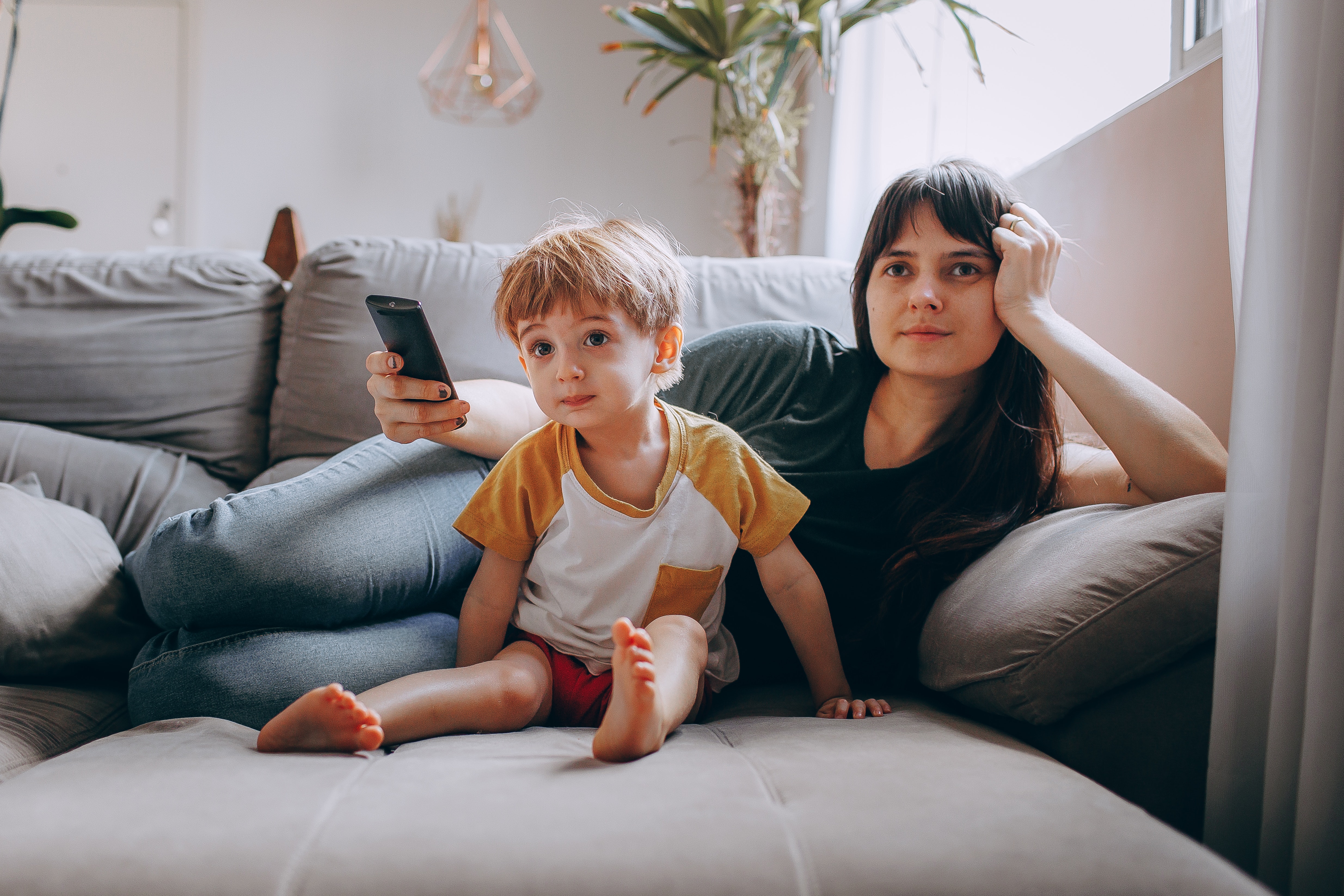Bedtimes can be a nightmare, but they don’t have to be. By working with your little one as their coach and not their opponent, bedtimes can be enjoyable and peaceful.
No matter what age we are, most of us live in a state of go-go-go. We are mentally and physically in motion, and this can create a state of stress throughout the day—even if it is just busyness. Then, we lie down in our beds, close our eyes, and expect our bodies to sleep. Without a proper transition from this busy, alert state, it can be difficult for the body to initiate sleep. The same is true for kids. When this happens, their little bodies may be experiencing overtiredness, a wired feeling, or ruminating thoughts. This can present behaviourally as hyperactivity, tears, anger, chattiness, and resistance. In this article, I’ll give my recommendations to create a peaceful pre-sleep routine that will help tell the body and mind that sleep is coming.
“Too early or too late can make it difficult to fall asleep. One way to tell is by watching for signs of sleepiness during the routine, such as yawning and becoming relaxed.”
So, why have a routine? Kids thrive on routines because it helps them to know what is coming next; most of the time, they’re not in control of things like that or aware of time. Cognitively, a routine will cue them that they are approaching the “time for sleep.” Aspects of the routine can also cue the nervous system that it’s time to switch from our sympathetic fight or flight state to our parasympathetic rest and digest state.
A SMOOTHER BEDTIME
Timing— Assess if your child’s sleep routine duration and bedtime are age-appropriate and right for them. A routine that starts too early or late can make falling asleep difficult. One way to tell is by watching for signs of sleepiness during the routine, such as yawning and becoming relaxed. We all have a natural window of time when our body is ready to initiate sleep. If we stay up past this window, we are likely to experience a period of hyperactivity—the same goes for our little ones. Getting the timing right can significantly impact your child’s ability to fall asleep peacefully.
Cue the Senses— When designing the pre-sleep routine, try to incorporate aspects that involve many senses, such as:
- Touch—Soft cozy clothing and bedding, cuddles, and back rubs
- Smell—Lotions or diffusers with essential oils that calm us, like lavender or chamomile
- Sight—Low, soft lighting, such as lamps rather than overhead lighting
- Sound—Soft music or singing the same sleepy song, reading in a quiet voice, or using white noise
- Connection—The ultimate sense. It’s imperative for a child to feel a sense of connection before sleep. This allows them to feel safe, lay their worries down, and fall asleep in their most restful state. All children deserve love, especially as the last thing they hear and feel before sleep. Take this time to fill their buckets right to the top by letting them know you see them, love them, and are grateful for them.
Power-Down— Although a little screen time in the evening can seem like it’s slowing our kids down or helping them relax, the light from screens (e.g., TVs, tablets, computers, or smartphones) can contribute to difficulty with falling or staying asleep. The light from these devices is an issue for sleep in two ways. Light input suppresses our brain’s release of melatonin,1 a hormone involved in maintaining our sleep-wake cycle. Blue light suppresses melatonin for longer than other types of light and shifts our brain activity towards a very alert and busy state. This effect lasts long after the device has been turned off and disrupts the quality of sleep that follows.2 Try to limit screen time overall and schedule it for earlier in the day.

Stay Cool— A cooler room triggers the brain to release melatonin and initiate sleep easier. We don’t want our little ones chilly, especially if they don’t tend to stay under their blankets; the ideal temperature for a room is around 20–21°C. Assess pyjamas and bedding as well to make sure your little ones are comfortable at a cool but cozy temperature, and ready to drift off calmly.
Food as Medicine—Refined sugar must be taken into account with your kid’s nutritional considerations during the day, but especially in the evening. Most children in Canada are consuming as much as five times the ideal limit for refined sugar (which needs to be less than 25 g per day). When the intake of refined added sugar is high, the body will experience hyperactivity, dysregulation, increased cortisol, and sleep quality will be affected.3 This can make for a tricky bedtime and might perpetuate a downward cycle of overtiredness.
In addition to limiting sugar, you can also consider adding foods that support sleep. Tart cherries are a great choice in the evening as they contain melatonin and tryptophan—precursors to the brain chemicals melatonin and serotonin—which are involved in sleep and happiness.4 I also love to use tea as medicine, and sleep is no exception. Chamomile is a slightly sweet-tasting herb that helps to calm the nerves and promote an easier bedtime routine.
SWEET DREAMS SMOOTHIE RECIPE
· 1 oz organic tart cherries concentrate
· ¼ c unsweetened vanilla vegan yogurt
· ¼ c chamomile tea
· 1 tsp almond butter
· Cinnamon (optional)
Blend and enjoy an hour before bedtime.
If you’re struggling with your children’s bedtime, consider these tips to help you build the foundation for a more peaceful end of the day, and more sleep for everyone.
For references visit ecoparent.ca/TWF/LATEWINTER23
You May Also Like: Bedtime Sleep Techniques for Restless Kids, Does Your Child Need a Routine?, What to Do When Kids Have Bedtime Fears.






